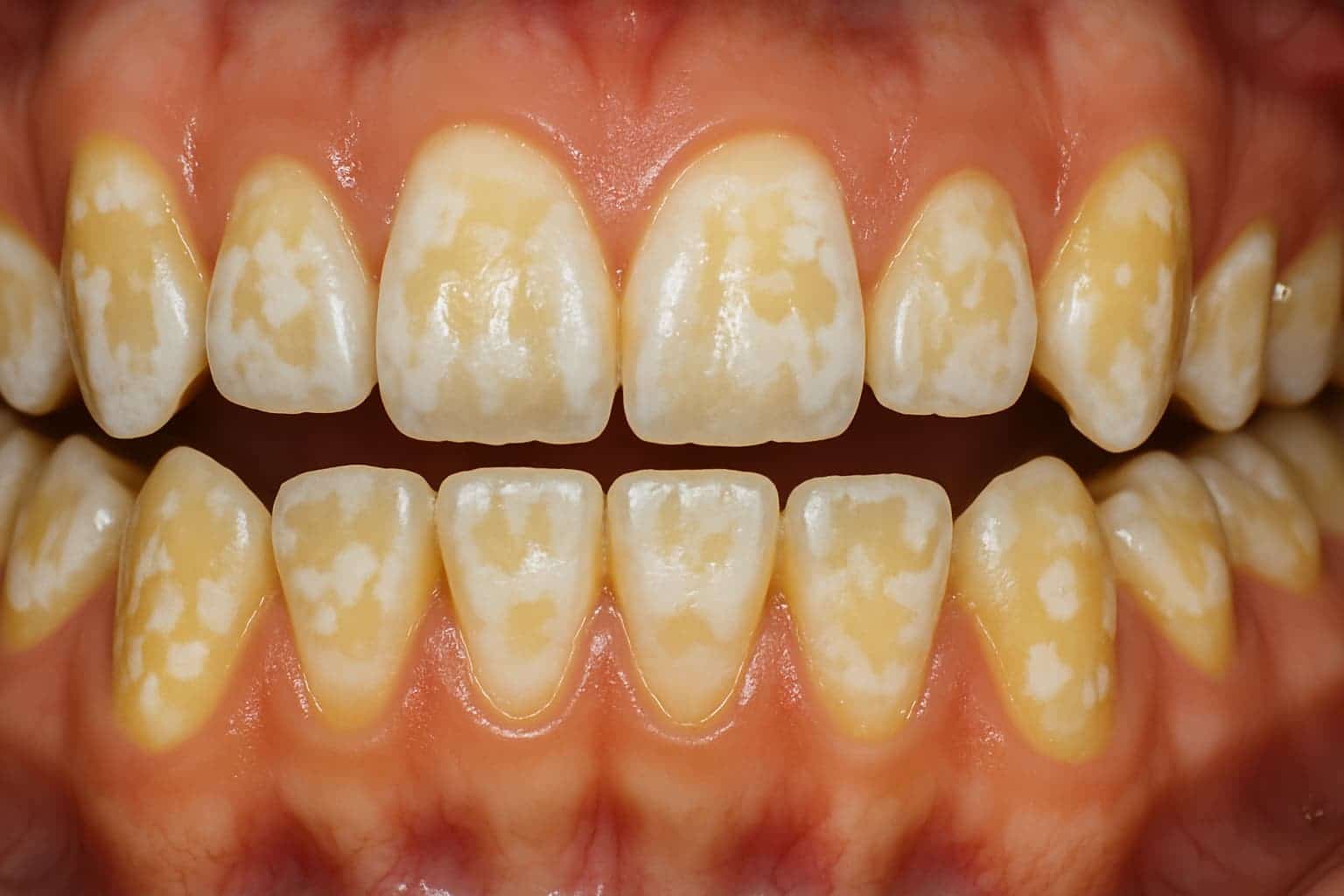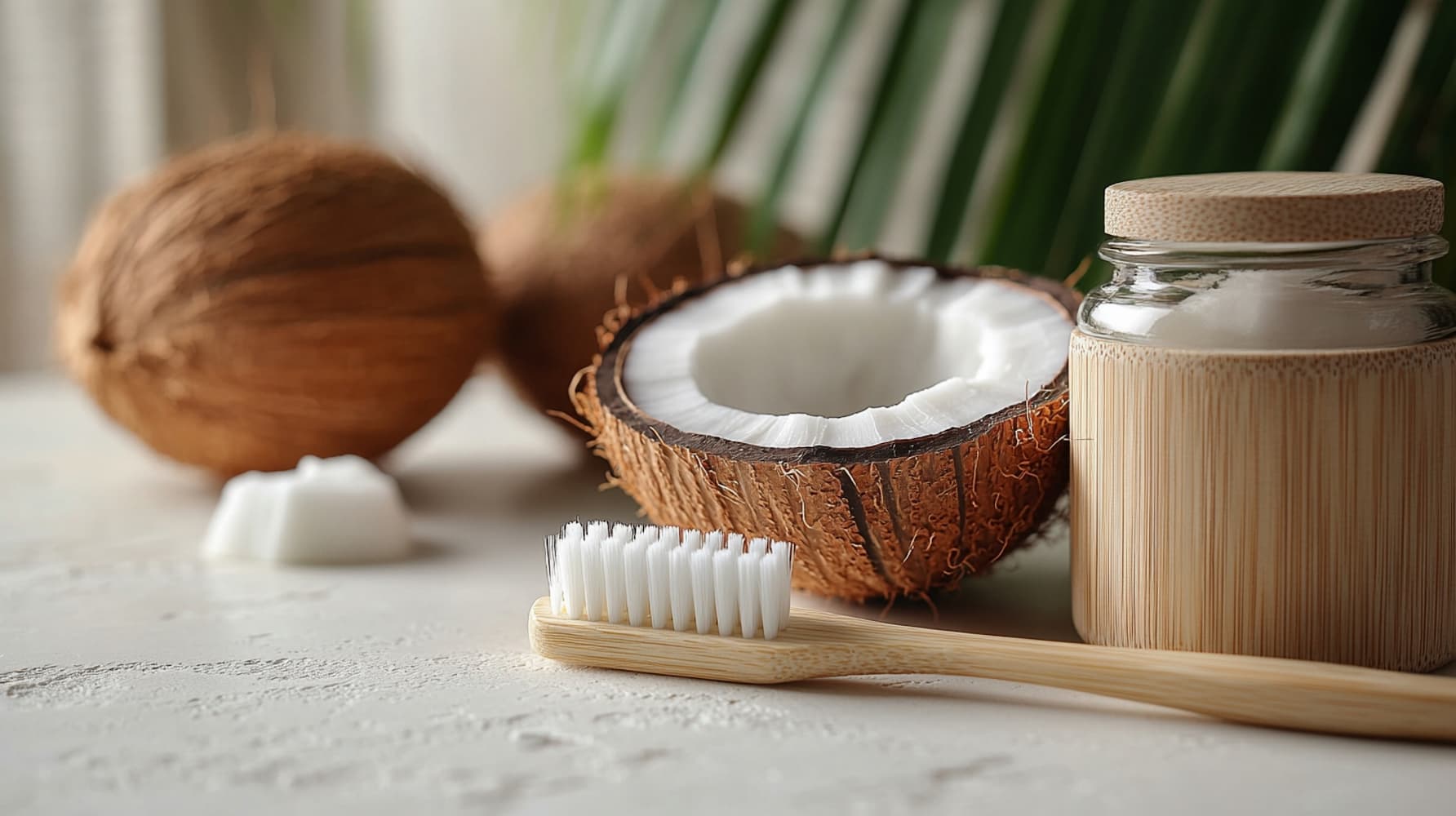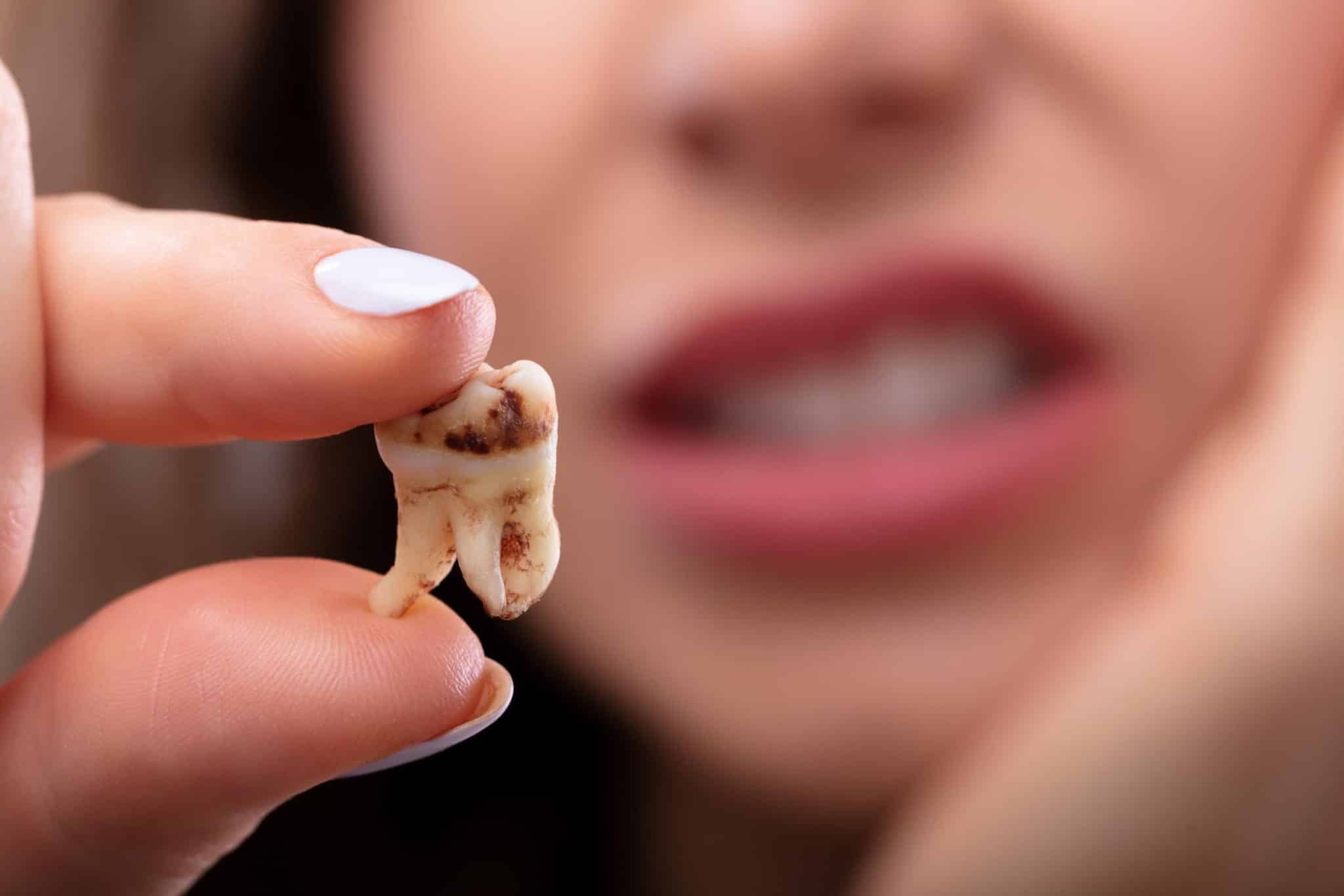In Summary
- Dental fluorosis is caused by excess fluoride during enamel formation
- It appears as white or brown spots and visible defects on the teeth
- This enamel alteration is irreversible, but aesthetic effects can be reduced
- Children are most at risk, especially between the ages of 6 and 12
- Careful monitoring of fluoride intake helps prevent fluorosis
- Several treatment options exist: whitening, resin infiltration, micro-abrasion, or dental veneers
Dental fluorosis is a condition of enamel caused by excess fluoride which generally causes the appearance of white to brown spots on teeth. Its effects vary according to its stage of development and are irreversible. Fortunately, solutions exist to mitigate the damage caused.

What is dental fluorosis?
Fluorosis is a dental condition caused by excess fluoride intake during the enamel development phase.
Excessive fluoride consumption while enamel is forming results in malformation and discoloration or surface defects on the teeth.
What are the risk factors for fluorosis?
The main risk factor is excessive fluoride consumption during the enamel formation phase.
Repeated low-dose fluoride exposure helps prevent cavities. However, when intake exceeds the recommended dose (0.05 mg per kg of body weight, not exceeding 1 mg/day from all sources), fluorosis may occur.
Sources of fluoride include fluoridated water, milk, salt, supplements (tablets, lozenges, drops), and fluoridated toothpaste.
What are the visible symptoms of dental fluorosis?
Fluorosis causes porosity of the enamel, which leads to several visible symptoms on the teeth.
Symptoms vary by severity: from white spots in mild cases to opaque or dark brown stains, pits, grooves, or cracks in severe cases.
Is dental fluorosis dangerous?
The main concern is aesthetic —the appearance of affected teeth can vary and impact self-confidence.
Fluorosis can also weaken tooth enamel, making teeth more prone to cavities, fractures, and sensitivity.
How can you prevent fluorosis in children?
Monitoring fluoride intake is essential, especially during tooth development.
Key tips include:
• Visiting the dentist annually for a check-up to assess your child’s oral health.• Supervising toothbrushing and using the right amount of fluoridated toothpaste based on age.
• Using non-fluoridated toothpaste until your child can spit properly (ask your dentist).
• Avoiding fluoride supplements unless prescribed.• Calculating total daily fluoride intake: tap water, milk, salt.
What are the solutions to treat dental fluorosis?
First, reduce fluoride intake to stop further fluorosis development.
Several treatment options exist depending on severity:
• Tooth whitening: improves appearance in mild cases; must be done by a professional.
• Resin infiltration: masks lesions in mild-to-moderate cases.
• Micro-abrasion: uses acid and abrasives to remove stains.
• Tooth polishing and composite filling for deeper stains.
• Veneers or inlays/onlays: for severe cases with irreversible damage.
FAQ
Can fluorosis go away over time?
No, fluorosis is irreversible on permanent teeth. It may disappear only with the loss of baby teeth.
Is there a test to diagnose fluorosis?
Diagnosis is usually based on visible symptoms. In some cases, a blood test may confirm fluoride levels.
Does fluorosis only affect children?
Fluorosis mostly affects children, as it develops during enamel formation (between ages 6 and 12 for permanent teeth).
Does bottled water contain fluoride?
Yes, but fluoride levels vary. Always check the label. Some brands exceed 0.5 mg/L—monitor your child’s total intake. Tap water may also contain fluoride depending on local geology.
Does fluorosis make teeth more fragile?
It depends on the severity. Mild cases affect appearance only.
Severe cases cause porous enamel, making teeth more prone to decay and fractures.
Are there alternatives to fluoride for cavity prevention?
Fluoride is highly effective in preventing cavities—especially in children.
When used correctly, fluoride is safe.
Ask your dentist to help choose the best dental care products for your child.
Can you get fluorosis without excess fluoride?
No. Fluorosis results from overexposure to fluoride during tooth development.
Are whitening toothpastes effective against fluorosis?
Not really. Professional dental whitening may help in mild cases, but whitening toothpaste is generally ineffective.
Is fluorosis a sign of poor dental hygiene?
Absolutely not. Fluorosis is caused by excess fluoride intake, not by poor hygiene habits.


